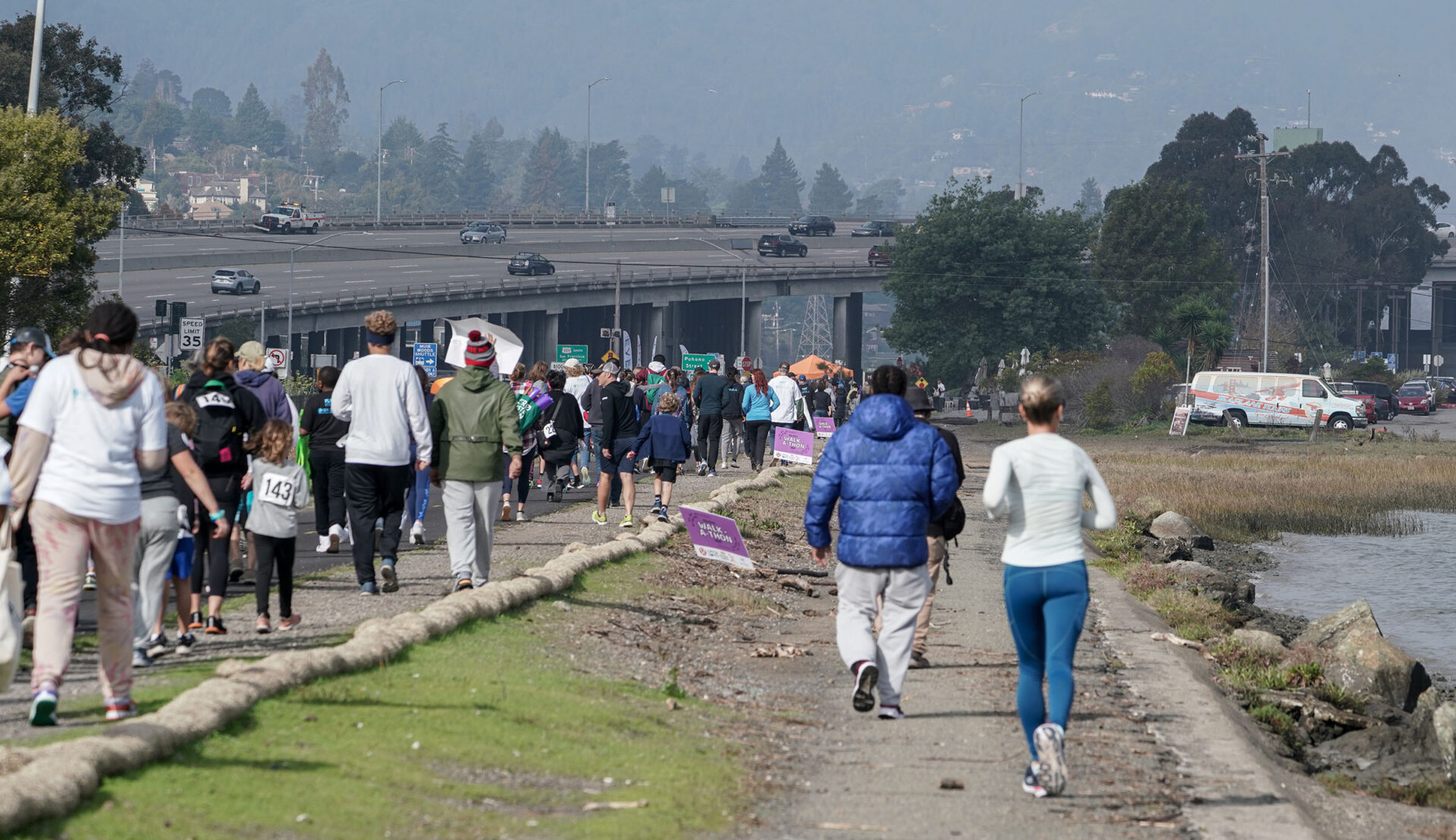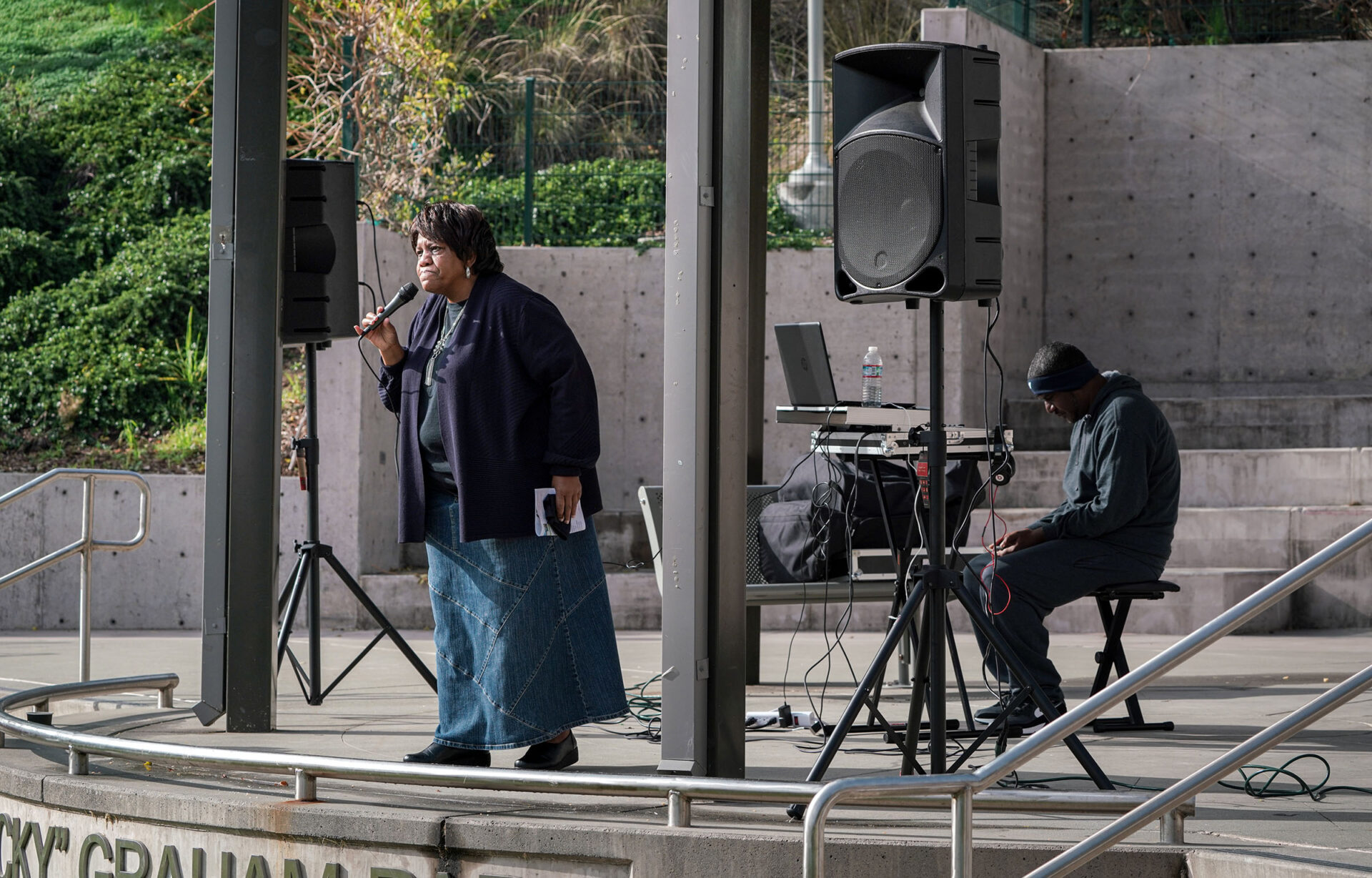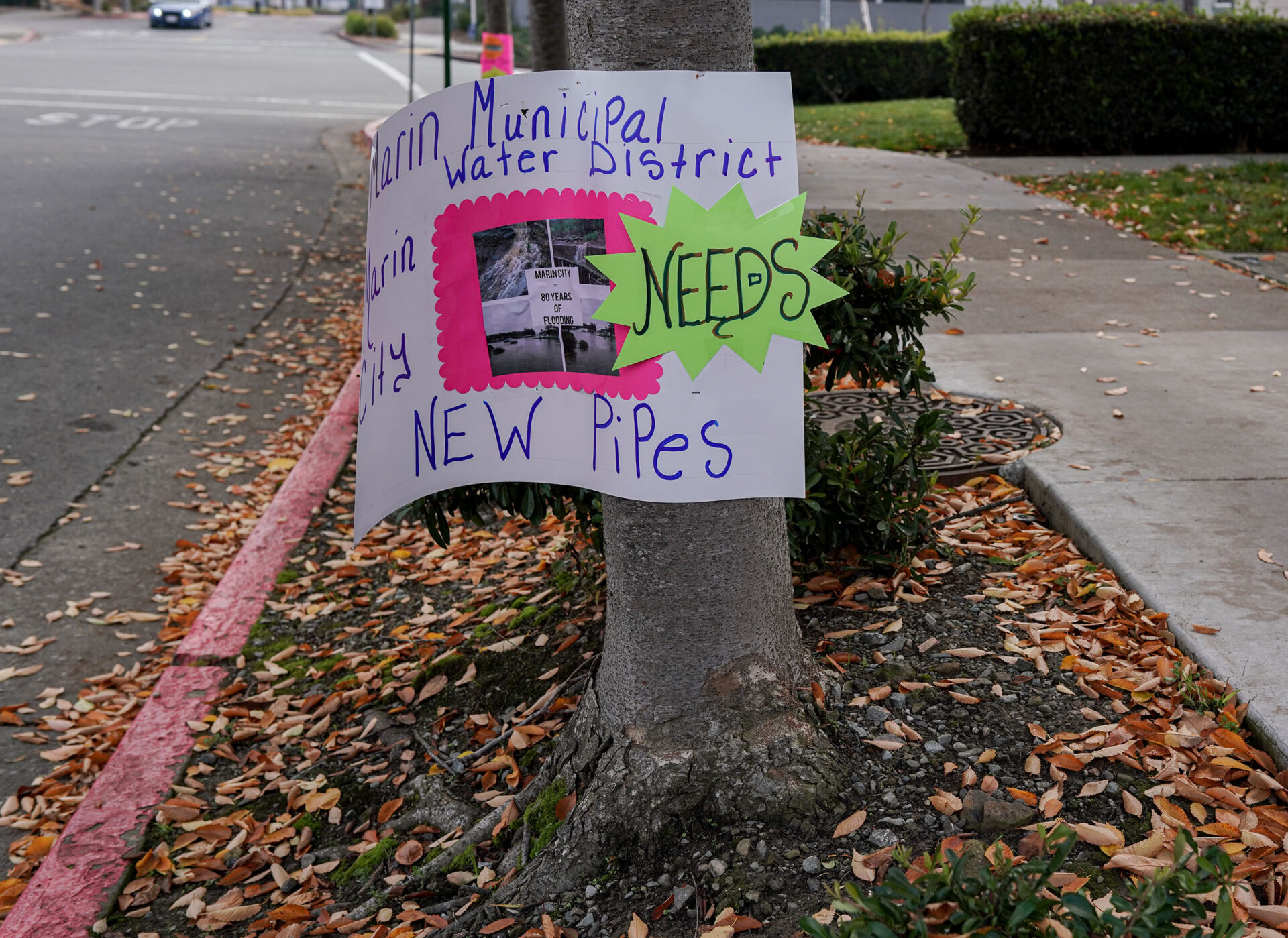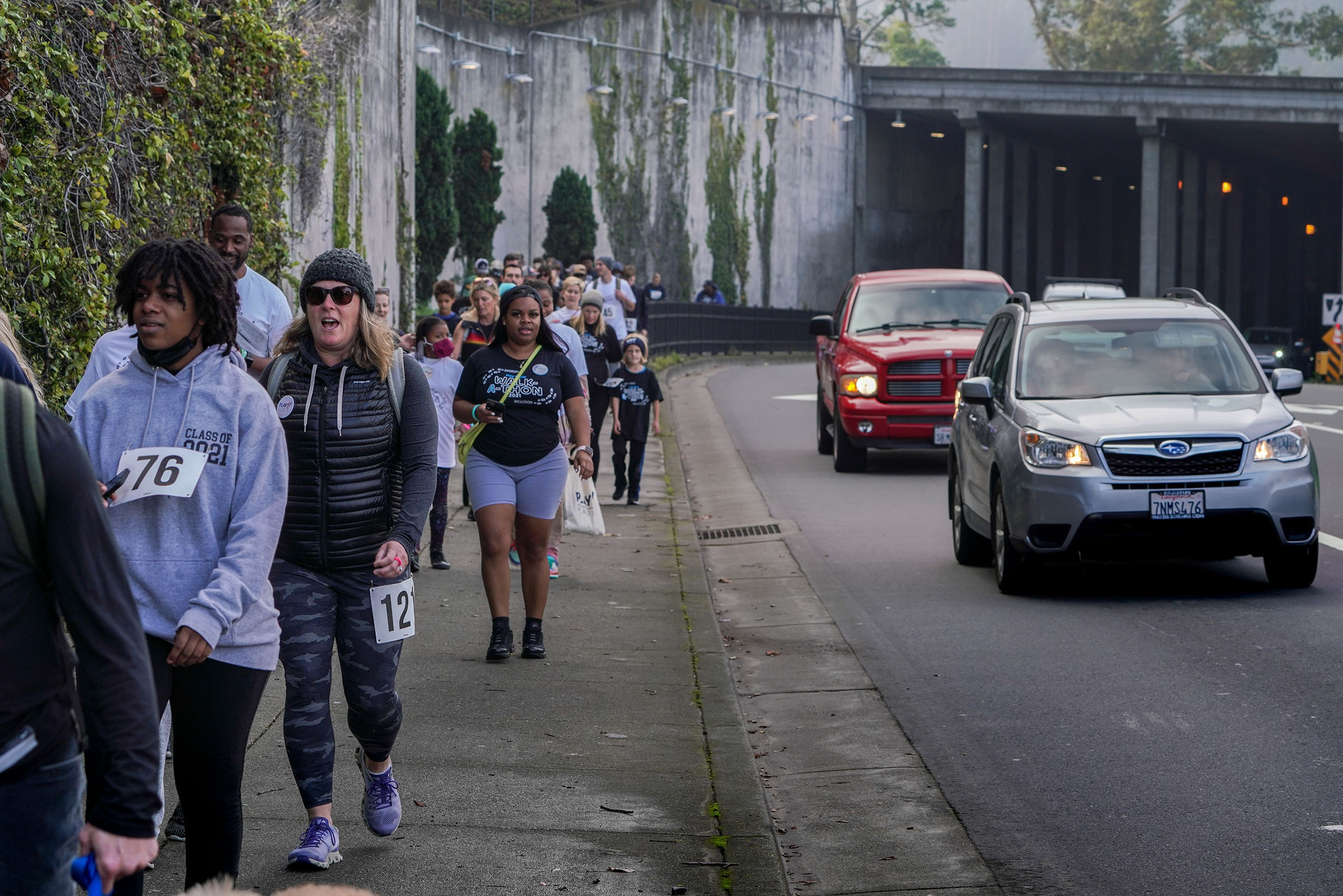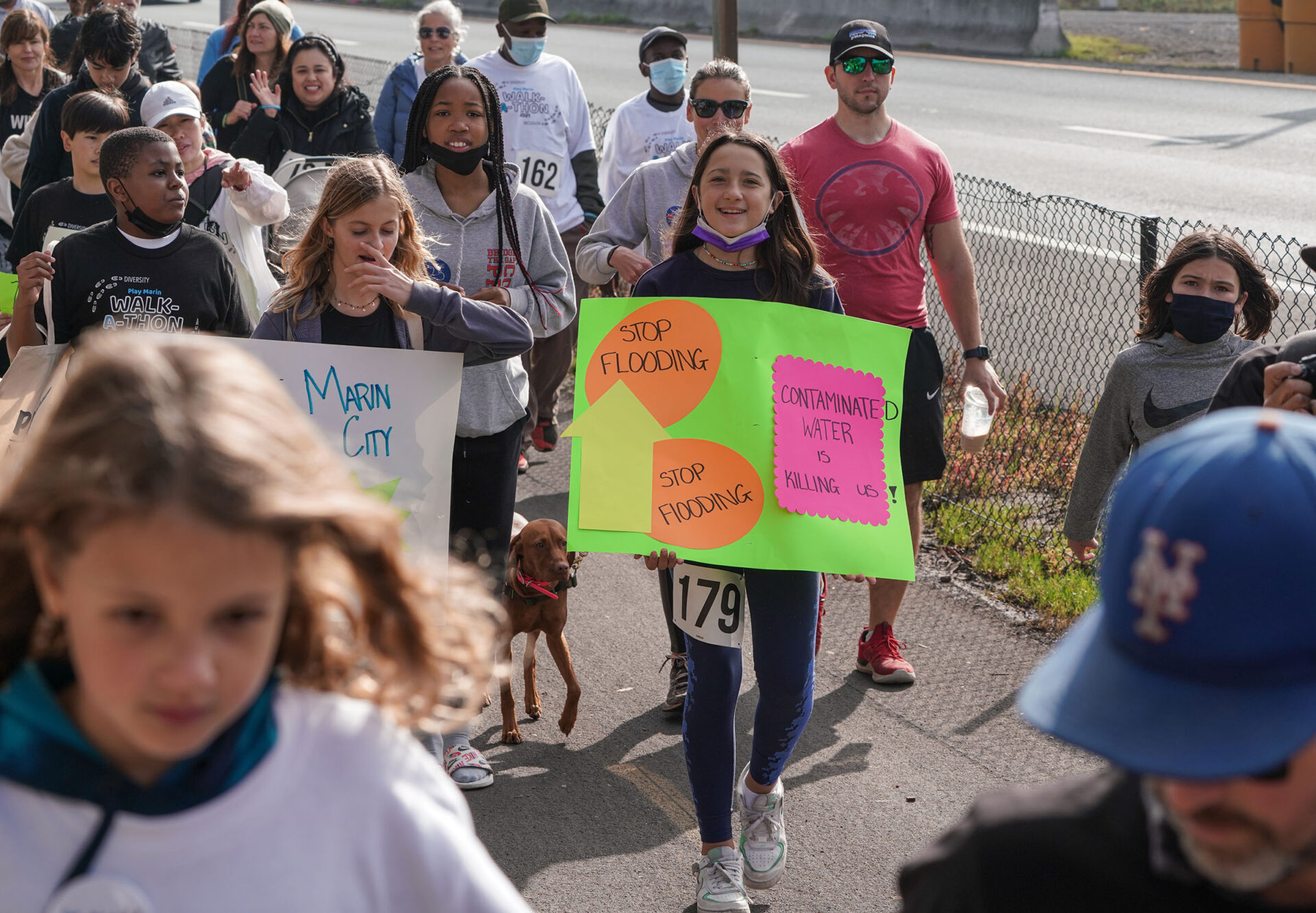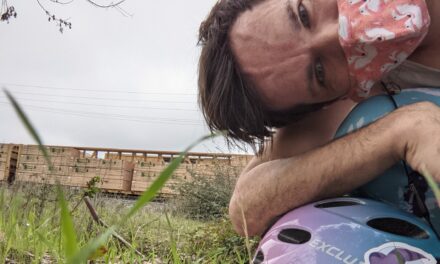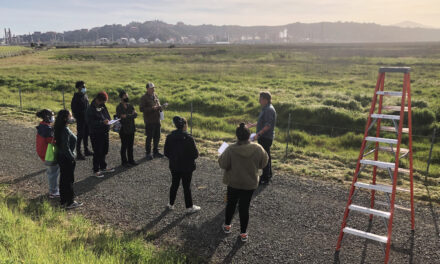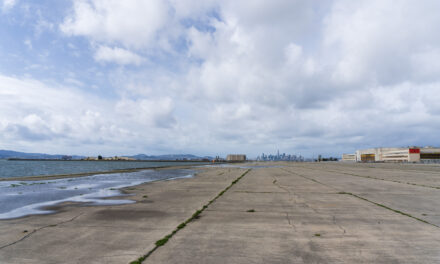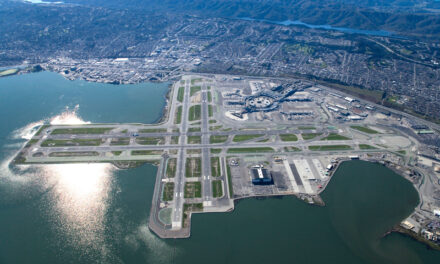The sun was just beginning to creep out of the fog Sunday morning, November 14th, when the kids and adults gathered at Graham Park in Marin City stopped what they were doing and pivoted to face the gazebo, where Terrie Green was standing with a microphone about to speak.
She began with a prayer and thanks, introducing the event which was done in collaboration with her son, Paul Austin. The event held two names: “MARCH FOR LIFE” and “walk-a-thon.” About 300 people had combined forces to walk for the Marin City Climate Resilience and Health Justice Organization and Paul Austin’s nonprofit Play!!! Marin, which promotes equity and inclusion through Marin City youth leadership.
Terrie, the executive director of the local environmental justice organization, spoke with conviction when she led into a call-to-action, bringing cheers from the crowd.
“Call your supervisors. Call your politicians. We’re living fewer years than folks on the left. We’re living fewer years than folks on the right. We’re living fewer years than folks up the street,” Terrie Green said.
“When we really started to think about why our community is so sick, we turned to the environment.”
Marin City, an unincorporated community of just over 3000 people which sits between Tamalpais and Highway 101, was the home for ship building (and shipyard waste) communities after WWII. For decades, the town has struggled with a variety of environmental and public health issues related to aging buildings, inadequate drainage, and pollution from the busy freeway at its feet. Terrie, a second-generation Marin City resident herself, has been fighting all her life to advocate for the historically underserved community, which is predominantly Black.
“When we really started to think about why our community is so sick, we turned to the environment,” Terrie Green said.
Lately, her efforts have been focused on running comprehensive water quality assessments to test residents’ tap water, advocating for the replacement of the galvanized pipes that supply Marin City’s drinking water, monitoring and removing harmful chemicals and metals that are present in neighboring marshland waters, and installing a proper drainage system to funnel rainwater out to the bay during extreme flooding events.
“Yea, it was bad,” said Shannon Bynum, a friend of Paul Austin, reflecting on the atmospheric river that struck on October 24th. “My car actually started messing up from it. The shopping center was all flooded so I tried to go to Safeway. [My car] started smoking and the check engine light came on.”
Bynum along with his three children, walked the four-mile route from Graham Park and along the Bathon Marsh Preserve to the turnaround point, where Miller Avenue and Almonte Boulevard connect.
During extreme flooding events, these are some of the most impacted areas.
“When the flooding happened, my son had a football game in Oakland. By the time we came back, we couldn’t get into Marin,” Terrie’s daughter, Chinaka Green said. “We parked our car by the houseboat communities and walked in waters up to our knees to get home. I knew that water was contaminated. The whole thing was terrifying.”
Participants in the march walked among trees adorned with posters that delivered messages like “80 years of walking in toxins MUST STOP!!” and “Marin City MATTERS”.
State and local plans to fix flooding and 101 runoff problems in Southern Marin are in the works but mired in complexities, frustrating the locals; roadblocks to moving plans forward are a challenge residents are all too familiar with. One near-term step may be installation of a large trash capture and filtration device in the area, but agencies are still negotiating on where to locate it.
Back at Graham Park, tired walkers gathered and played on the grass while a young woman sang cover songs from artists including Bob Marley, Fleetwood Mac and Billie Eilish.
Terrie and other members of Marin City Climate Resilience sat at tables with information about the work that still needs to be done. Moving the needle forward, she says, has been a struggle.
“What it’s going to take is something short of a lawsuit. Why do we have to have a lawsuit?” Terrie said.
The event sought to advocate for the health disparities that have long plagued the area, but also to promote inclusion, inviting people into the tight-knit and supportive community of Marin City. And for residents like Terrie and Chinaka Green, their dedication to protecting their community and preserving it for future generations is unwavering.
“I just want us to be able to stay longer. I don’t want to be forced out, we love this community,” Chinaka Green said. “We just want to get things back to its natural state. We want our climate to be healthy. We want to sustain a healthy lifestyle.”
More on Marin City, and progress on various drainage initiatives, from KneeDeep in December.






